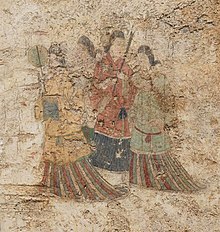
A hairstyle, hairdo, haircut or coiffure refers to the styling of hair, usually on the human head but sometimes on the face or body. The fashioning of hair can be considered an aspect of personal grooming, fashion, and cosmetics, although practical, cultural, and popular considerations also influence some hairstyles.
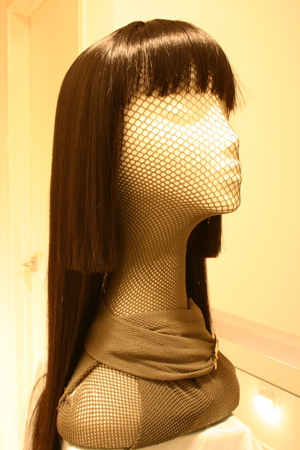
A wig is a head covering made from human or animal hair, or a synthetic imitation thereof. The word is short for "periwig". Wigs may be worn to disguise baldness, to alter the wearer's appearance, or as part of certain professional uniforms.

A ponytail is a hairstyle in which some, most, or all of the hair on the head is pulled away from the face, gathered and secured at the back of the head with a hair tie, clip, or other similar accessory and allowed to hang freely from that point. It gets its name from its resemblance to the tail of a pony.

Kanzashi are hair ornaments used in traditional Japanese hairstyles. The term kanzashi refers to a wide variety of accessories, including long, rigid hairpins, barrettes, fabric flowers and fabric hair ties.

1830s fashion in Western and Western-influenced fashion is characterized by an emphasis on breadth, initially at the shoulder and later in the hips, in contrast to the narrower silhouettes that had predominated between 1800 and 1820.

In the context of hairstyles, the usage of the term pigtail shows considerable variation. The term may refer to a single braid, but is more frequently used in the plural ("pigtails") to refer to twin braids on opposite sides of the head. Sometimes, the term "pigtails" applies whether or not the hair is braided, but there is not widespread agreement on this.
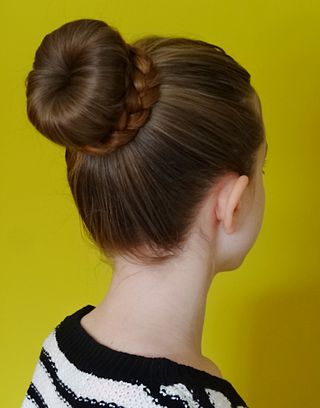
A bun is a type of hairstyle in which the hair is pulled back from the face, twisted or plaited, and wrapped in a circular coil around itself, typically on top or back of the head or just above the neck. A bun can be secured with a hair tie, barrette, bobby pins, one or more hair sticks, a hairnet, or a pen or pencil. Hair may also be wrapped around a piece called a "rat". Alternatively, hair bun inserts, or sometimes rolled up socks, may also be used to create donut-shaped buns. Buns may be tightly gathered, or loose and more informal.
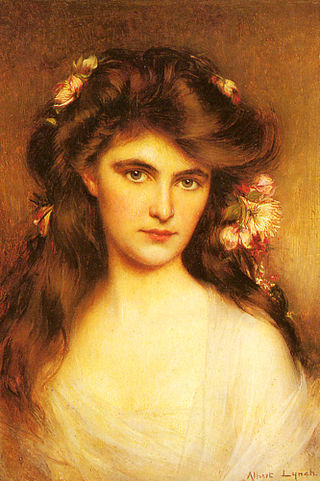
A bouffant is a type of puffy, rounded hairstyle characterized by hair raised high on the head and usually covering the ears or hanging down on the sides.

1840s fashion in European and European-influenced clothing is characterized by a narrow, natural shoulder line following the exaggerated puffed sleeves of the later 1820s and 1830s. The narrower shoulder was accompanied by a lower waistline for both men and women.
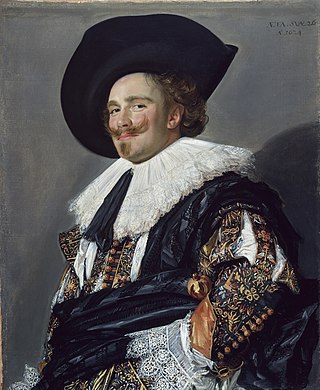
Fashion in the period 1600–1650 in Western clothing is characterized by the disappearance of the ruff in favour of broad lace or linen collars. Waistlines rose through the period for both men and women. Other notable fashions included full, slashed sleeves and tall or broad hats with brims. For men, hose disappeared in favour of breeches.
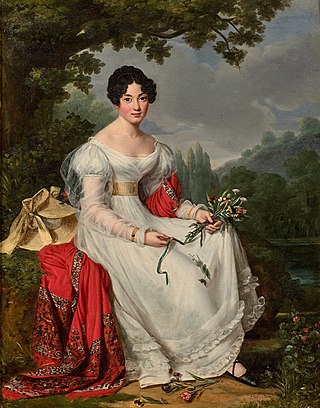
During the 1820s in European and European-influenced countries, fashionable women's clothing styles transitioned away from the classically influenced "Empire"/"Regency" styles of c. 1795–1820 and re-adopted elements that had been characteristic of most of the 18th century, such as full skirts and clearly visible corseting of the natural waist.

Fashion in the period 1650–1700 in Western clothing is characterized by rapid change. The style of this era is known as Baroque. Following the end of the Thirty Years' War and the Restoration of England's Charles II, military influences in men's clothing were replaced by a brief period of decorative exuberance which then sobered into the coat, waistcoat and breeches costume that would reign for the next century and a half. In the normal cycle of fashion, the broad, high-waisted silhouette of the previous period was replaced by a long, lean line with a low waist for both men and women. This period also marked the rise of the periwig as an essential item of men's fashion.

The pouf or pouffe also "toque" is a hairstyle and a hairstyling support deriving from 18th-century France. It was made popular by the Queen of France, Marie Antoinette (1755–1793), when she wore it in June 1775 at the coronation of her husband Louis XVI, triggering a wave of French noblewomen to wear their hair in the same manner. The hairstyle would become popular across Europe in the 1770s.

Chinese clothing includes the traditional hanfu and garments of ethnic minorities, as well as modern variations of indigenous Chinese dresses. Chinese clothing has been shaped through its dynastic traditions, as well as through foreign influences. Chinese clothing showcases the traditional fashion sensibilities of Chinese culture traditions and forms one of the major cultural facets of Chinese civilization.
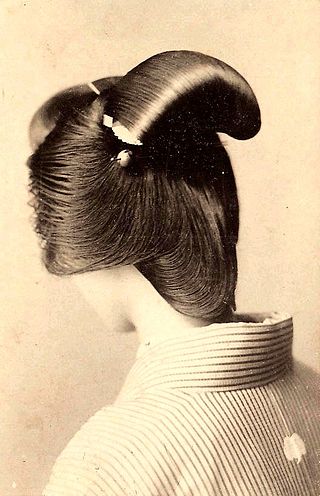
Nihongami is the term used for a number of traditional Japanese hairstyles considered to be distinctive in their construction and societal role.

Geisha (芸者), also known as geiko (芸子) or geigi (芸妓), are female Japanese performing artists and entertainers trained in traditional Japanese performing arts styles, such as dance, music and singing, as well as being proficient conversationalists and hosts. Their distinct appearance is characterised by long, trailing kimono, traditional hairstyles and oshiroi make-up. Geisha entertain at parties known as ozashiki, often for the entertainment of wealthy clientele, as well as performing on stage and at festivals.
Hairstyling tools may include hair irons, hair dryers, hairbrushes, hair rollers, diffusers and various types of scissors.

Hairstyle fashion in Rome was ever changing, and particularly in the Roman Imperial Period there were a number of different ways to style hair. As with clothes, there were several hairstyles that were limited to certain people in ancient society. Styles are so distinctive they allow scholars today to create a chronology of Roman portraiture and art; we are able to date pictures of the empresses on coins or identify busts depending on their hairstyles.

Buyao is a type of Chinese women's hair ornament. It is a type of Chinese hairpin which was often times decorated with carved designs and jewelries that dangles when the wearer walks, hence the name, which literally means "shake as you go". The buyao is similar to a zan hairpin, except for the presence of its dangling ornaments, which are its primary featured characteristics. The buyao appeared as early as in the Han dynasty, where only noble women in the royal family could wear it. In ancient times, the use of buyao denoted noble status. Some noble women also put buyaos on their tiaras, making their hair decoration more luxurious than simple buyao. Common material used in making the buyao was gold; the ornaments were typically jade and pearls. Other valuable materials could be used, such as silver, agate, etc. Many centuries after the fall of the Han dynasty, the buyao was introduced to ordinary civilians; and when all women were allowed to wear to it, more variety of materials were used to produce them. Buyao was passed down over generations; buyao decorated with pendants are still popular in modern day China.

Japanese clothing during the Meiji period (1867–1912) saw a marked change from the preceding Edo period (1603–1867), following the final years of the Tokugawa shogunate between 1853 and 1867, the Convention of Kanagawa in 1854 – which, led by Matthew C. Perry, forcibly opened Japanese ports to American vessels, thus ending Japan's centuries-long policy of isolation – and the Meiji Restoration in 1868, which saw the feudal shogunate dismantled in favour of a Western-style modern empire.
